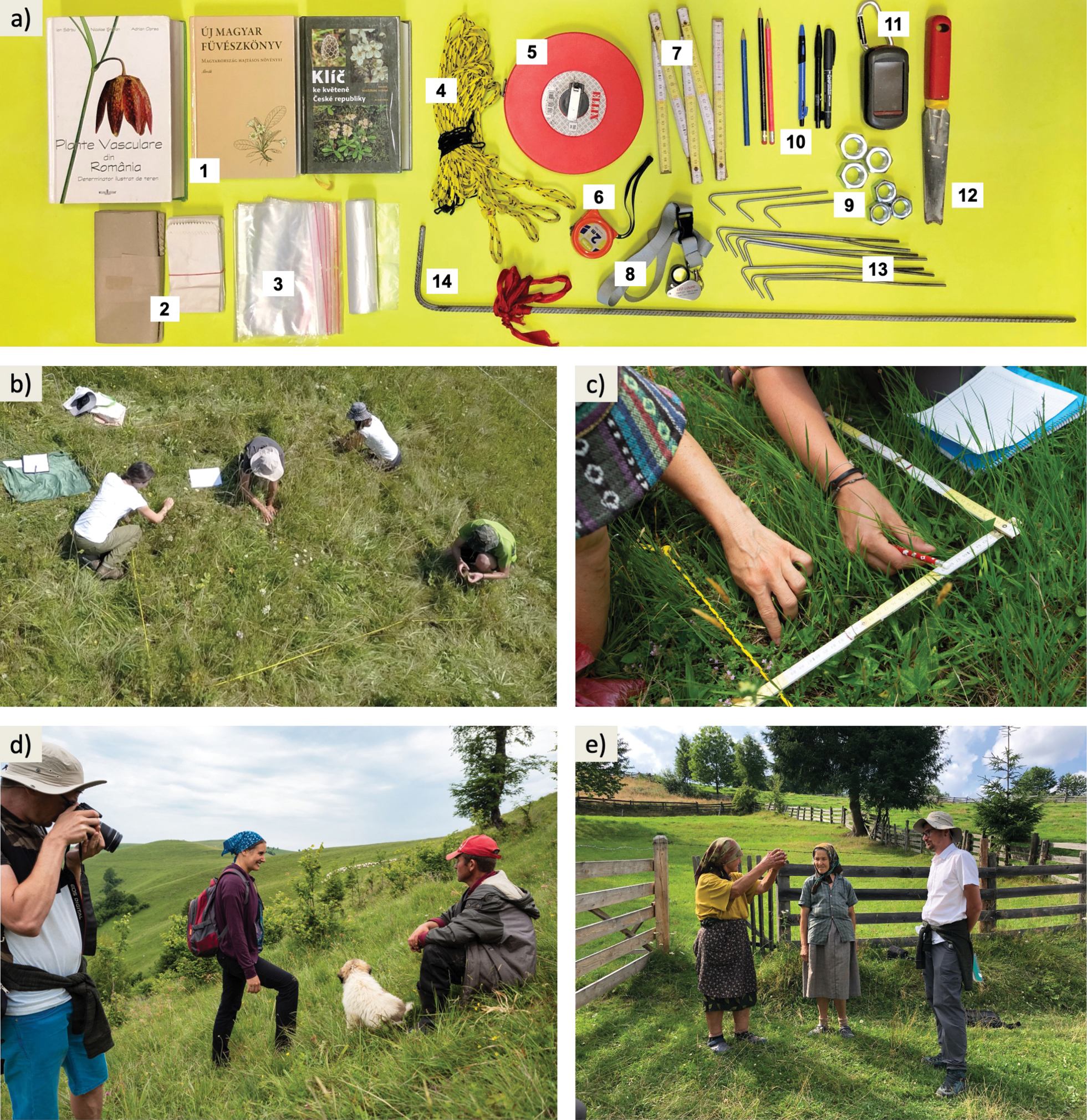
|
||
|
a) Field equipment for biodiversity sampling includes 1: determination keys for local flora, 2: paper bags for soil and cryptogam samples, 3: plastic bags for plants to be determined later, 4: rope with nodes to allocate the small-sized plots, 5: 50-m long measuring tape for establishing the 100-m2 plot, 6 and 7: 2-m long measuring tape or folding meter for defining the smallest plots and for measuring soil depth and plant height, 8: magnifying glass for plant identification, 9: metal nuts of different size for fixing the corners, 10: writing tools, 11: GPS device, 12: shovel for taking soil samples, 13: tent pegs for fastening the rope, 14: steel rod to measure soil depth. b) Recording of the above-ground vascular plants, bryophytes and lichens starts at 1 cm2 of the SE and NW corners in the 10-m2 plots. It takes about 3 hours to inspect the whole area, but the time can differ depending on the size of the team and type of vegetation. Rzepiska, Poland, August 2018, M. Chilinski. c) The biggest challenge during the vegetation sampling is to identify each single stem or leaf. Șurdești, Romania, June 2018, K. Nurowska. d) Ethnological part of the vegetation survey builds on traditional ecological knowledge of local people. Ieud, Romania, June 2018, M. Janišová; e) Outdoor interview with local inhabitants reveals valuable details on the sampled land parcel as well as on the farming system in the village. Mărișel, Romania, August 2019, M. Janišová. |